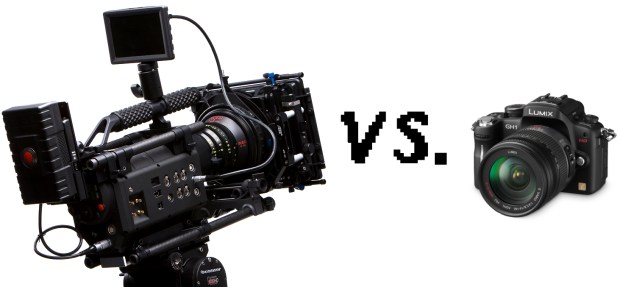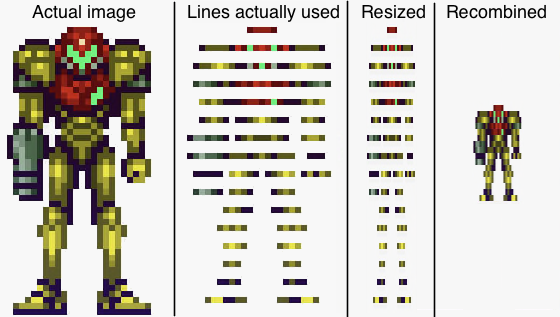
We posted this earlier this morning, but I want to weigh in since this is up my alley. I’m not entirely sure why people continue to compare the Red to consumer cameras. I mean, the price difference alone puts them in different categories, not to mention the format, resolution, and gear suite. Yet constantly I see people making comparisons like this one, and I can’t for the life of me figure out what they mean to prove. It’s like comparing a couple quick little rice rockets against a Lamborghini Murcielago, and then having them race around your yard. Sure, you could draw conclusions from it, but you’re kind of missing the point.
Of course, it’s not necessarily the case that whoever made this video intended to equate the cameras in any way (the objective, aside from filming women in the dark, is unclear). But if they did, let’s look at this objectively.
Here we have three great cameras. One a micro four-thirds compact, one a full-frame pro DSLR, and one a professional digital cinema camera (two years old, for the record). You can take video under similar circumstances, but unless you’re prepared to put in the work to make each video look as good as it should, it’s a useless comparison. Putting a video on the web, even to a high-quality video site like Vimeo, is not the way to compare three cameras.
The 5D mk II records directly to h.264; this is a perfectly good codec for distributing video, as it is highly efficient, but the way the video data is stored and streamed makes it messy when editing and lossy in color correcting. The GH1 uses high-bitrate AVCHD but apparently wraps the 24p mode in 60i, which is something I’ve had to deal with and it’s a pain in the ass. Lastly, both cameras use a recombination method for producing the final image, illustrated here. This leads to strange artifacting and Moire effects.

The Red One (to say nothing of its upcoming replacements) records to a proprietary high-bitrate, high-color-depth RAW format, using as many pixels you want from the sensor and not recombining at all. This produces an enormous, highly detailed, and very flat-looking image which can be manipulated as much as a RAW image from your DSLR. It’s made for actually making movies, real movies, and is high-res enough that they can apply special effects directly, which normally require a higher resolution than the editing footage.
But when you take a few seconds of footage at a time, in situations with really bad lighting, and then resize the whole thing down to a web-streaming 720×480 file, you lose all the details that might have set any apart. I’d say that any differences you notice in this video are the result of chance or the lens.
I’m not advocating getting a Red over getting a 5D mk II or GH1, they’re three different cameras that happen to shoot video and beyond that they’re incomparable. I personally would love to have all three, and I’d value what they did in different circumstances. The 5D’s full-frame sensor makes it easier to use and set up in the dark than either a Red or GH1; the GH1’s compact size makes it an easy carry-around; both are much more convenient to use than a Red, which weighs a huge amount and requires thousands and thousands in extra gear to shoot right. And if I had to pick one, I’d get the 5D, since I’m primarily a still photographer and if I did need to shoot something serious, a careful cinematographer would be able to avoid the 5D’s weaknesses pretty well.
So that’s about 500 more words than needed to be said on this, but these comparisons persist after so long that I feel I have to just engrave it on the internet that they’re not admissible evidence, and the whole idea of a comparison is silly anyway.